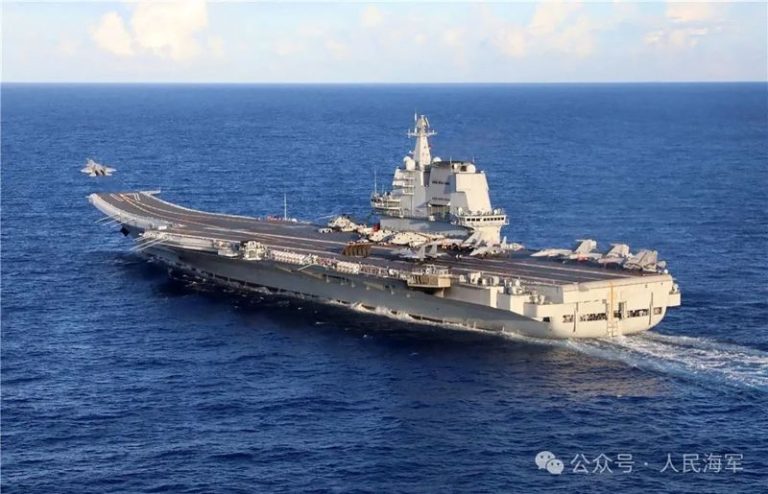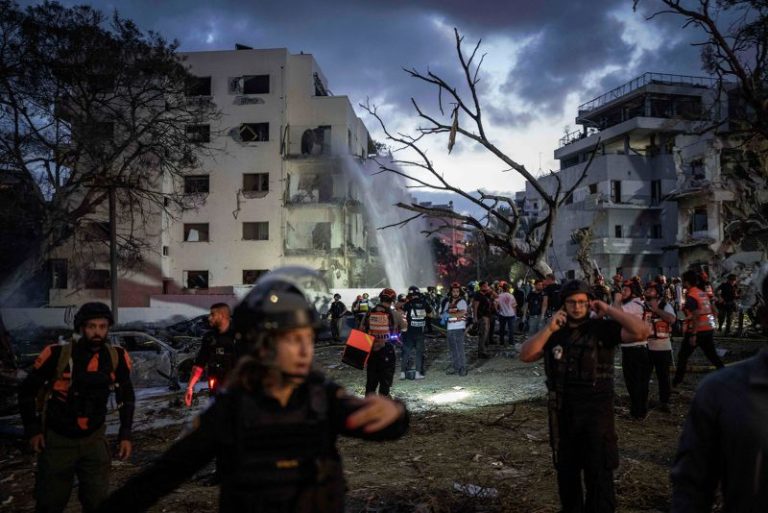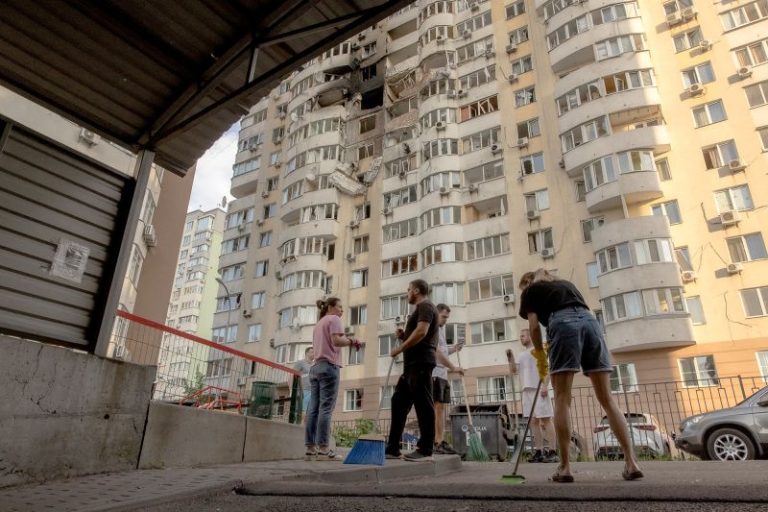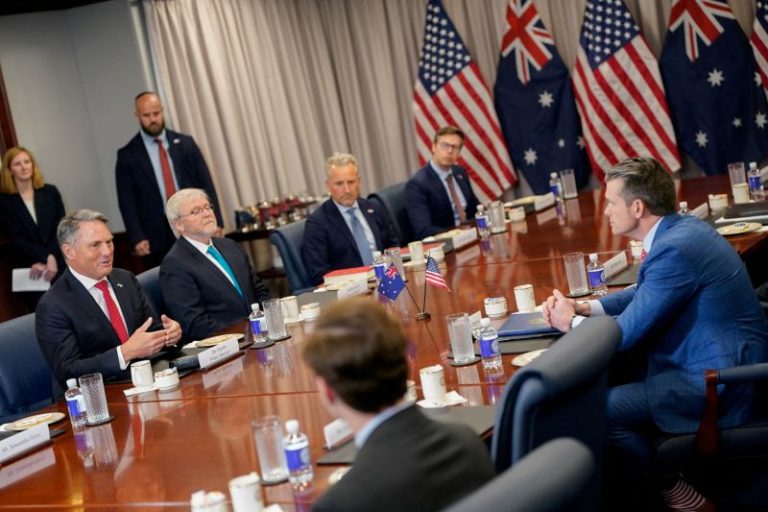For the past month Chinese aircraft carrier strike groups have been operating further from home shores and in greater strength than ever before, testing state-of-the-art technology and sending a message they are a force to be reckoned with, analysts and officials say.
Since early May, a People’s Liberation Army Navy (PLAN) flotilla led by the carrier Shandong has conducted exercises north of the Philippines; its newest carrier, the soon-to-be commissioned Fujian, has been on sea trials in disputed waters west of the Korean Peninsula; and its oldest carrier, the Liaoning has led exercises in the Pacific waters of Japan’s exclusive economic zone.
During the drills the Fujian for the first time conducted aircraft take-off and landing operations at sea using its advanced electromagnetic catapult system (EMALS), regional defense officials said.
That’s a significant development. Only one other carrier in the world has that system – the US Navy’s newest carrier, the USS Gerald R Ford.
Last Monday, the Japanese Defense Ministry said the Shandong and its support ships had been exercising in the waters southeast of the island of Miyako Island in southern Okinawa prefecture, putting two Chinese carrier strike groups in the open Pacific for the first time.
At the center of that box of exercises is Taiwan, the democratically ruled island claimed by China’s Communist Party despite never having controlled it.
Chinese leader Xi Jinping has vowed to “achieve reunification” with the island, using force if necessary.
Analysts noted that the Pacific exercises specifically covered areas through which US naval support of Taiwan, in the event of conflict there, would have to pass.
“The projection of power is beyond China’s own defensive needs,” the Taiwanese official said, unless it wants to assert the entire first island chain is its internal waters.
The first island chain stretches from Japan to the Philippines and further down to Indonesia as is seen as a strategically vital line to both China and the US.
Some analysts say Beijing may be laying the groundwork for that with so-called “salami slicing” tactics, or pushing its claims and presence in small but unrelenting steps until it’s too late for an opponent to stop them.
Besides Taiwan, the waters inside that first island chain include the Japanese-controlled Senkaku Islands, called the Diaoyus in China and, like Taiwan, claimed by it as sovereign territory.
Chinese maritime forces have been increasing their visibility around those islands. According to statistics from the Japanese Defense Ministry, more than 100 Chinese vessels have appeared in the contiguous zone of the islands – the waters between them – for all but one of the past 24 months.
Also within the first island chain are disputed islands in the South China Sea that have seen violent flare-ups between Chinese and Philippine forces as Beijing tries to aggressively assert its claim over geographical features in the waterway through which trillions of dollars in trade passes each year.
US Defense Secretary Pete Hegseth called out Beijing tactics at a recent defense forum in Singapore.
“Any unilateral attempt to change the status quo in the South China Sea and the first island chain by force or coercion is unacceptable,” Hegseth said in a speech at the Shangri-La Dialogue, noting the persistent PLA presence around Taiwan and harassment and intimidation tactics in the South China Sea.
“It has to be clear to all that Beijing is credibly preparing to potentially use military force to alter the balance of power in the Indo-Pacific,” Hegseth said.
Reaching well into the Pacific
While Hegseth focused on China’s activities inside the first island chain, the PLA Navy’s recent movements have it operating carriers beyond the second island chain, which runs from the Japanese main island of Honshu southeast to the US territories of Saipan and Guam and then southwest to Yap, Palau and New Guinea.
Japanese officials reported last week two Chinese carrier groups operating well out into the open Pacific.
“It is believed that China is planning to improve the operational capability of its aircraft carriers and their ability to conduct operations in distant areas of the sea,” Japanese Chief Cabinet Secretary Yoshimasa Hayashi said last Monday, noting that China has demonstrated for the first time the ability to operate a carrier in the waters east of Iwo Jima and close to Japan’s easternmost island Minamitorishima.
“The PLA is demonstrating a capability for sustained carrier ops outside of the first island chain. This is certainly a significant milestone for the PLAN,” said Ray Powell, director of SeaLight, a maritime transparency project at Stanford University’s Gordian Knot Center for National Security Innovation.
“Beijing is using the PLAN to signal its growing maritime power and willingness to use it,” said Carl Schuster, a former US Navy captain and Hawaii-based analyst.
A PLA Navy press release on Tuesday acknowledged the carrier activity in waters well out into the Pacific and emphasized that they are defense-minded.
“The Chinese Navy’s Liaoning and Shandong aircraft carrier formations recently went to the Western Pacific and other waters to conduct training to test the troops’ far sea defense and joint combat capabilities. This is a routine training,” the release quoted Chinese navy spokesperson Wang Xuemeng as saying, adding that the exercises are “not targeting specific countries.”
Overall, Schuster said China is making a very clear statement with the series of exercises.
“Although Beijing has characterized these activities as routine training and trials, its neighbors did not miss the related strategic message: China has become a major naval power that can and will apply that power in their waters if it chooses,” Schuster said.
New ships, new reach
Only one other naval power, the United States, has the capability to operate two or more carrier strike groups at such distances.
US Navy carrier strike groups usually consist of the carrier plus cruisers and/or destroyers equipped with the Aegis missile system to defend the prized asset at their heart.
Analysts noted the Chinese carrier groups in the Pacific have a similar formation and include some of the PLAN’s newest and most powerful surface ships, large Type 055 guided-missile destroyers as well as new but smaller Type 052DM destroyers.
With a displacement of around 12,000 tons, the Type 055s are considered by many naval analysts to be the most powerful surface combatants afloat and a centerpiece of what is now the world’s largest naval force, a title the PLAN took from the US Navy around 2020.
A report Tuesday in the state-run Global Times said the PLAN may be looking to operate carrier strike groups in all the world’s oceans like the US Navy does.
Chinese military affairs expert Zhang Junshe told the tabloid that Beijing’s expanding overseas business and cultural interests justify its naval expansion, including the ability of carriers to operate far from Chinese shores.
New carrier training may be seen in the Indian and Atlantic oceans, Zhang said.
The newest carrier
The Fujian, China’s newest aircraft carrier, is likely to be pivotal in the any PLA Navy plans to operate well out into the Pacific or other oceans.
Estimated to displace 80,000 tons, it’s believed to the largest non-American warship ever built and able to carry a fleet of about 50 aircraft, up from 40 on Liaoning and Shandong.
During its sea trials in the Yellow Sea last month, the Fujian conducted aircraft take-off and landing operations, according to South Korean defense officials.
The trials marked the first time a Chinese carrier had conducted such an activity inside the Provisional Measures Zone (PMZ), a disputed area where China and South Korea have agreed to both oversee fisheries management, but where friction between Beijing and Seoul persists.
The take-off and landing operations are significant as it marks the first time the Fujian has done so at sea, using its electromagnetic catapult system.
The system allows carrier aircraft to take off with heavier weapon and fuel loads than those operating off the Shandong and Liaoning, which feature ski-jump type take-off ramps, enabling Fujian’s aircraft to strike enemy targets from greater distances.
The Fujian is expected to carry the naval version of the J-35, a twin-engine stealth fighter jet that can’t operate off a China’s older carriers.
And China is building another carrier, for now known as the Type 004, which is expected to not only employ EMALS technology, but also – unlike Fujian but like the USS Ford – be nuclear-powered.
Nuclear power will extend the range of Chinese naval air fleet significantly because, as the carrier doesn’t need to be refueled, it can stay at sea longer and farther away from replenishment tankers.
“Beijing’s carrier program, like its fleet, is expanding and improving rapidly, not just with new ships but with new aircraft. That trend signals Beijing’s maritime intent,” Schuster said.
But even with the new equipment and expanded range, analysts expressed caution on overestimating the PLA Navy’s abilities.
Compared to the US, which has been operating carrier strike groups in the far seas for decades, China is very much at the beginning of the learning curve.
“China’s carrier force is still very much developmental at this stage. Still, China is closing the gap,” said Powell, the SeaLight analyst.










